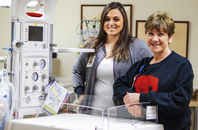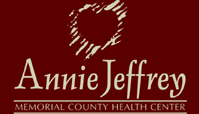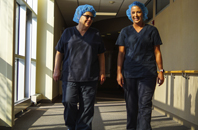Radiology Services
ANNIE JEFFREY HEALTH CENTER
531 BEEBE STREET
PO BOX 428
OSCEOLA, NE 68651
P: (402) 747-2031
An X-ray (radiograph) is a noninvasive medical test that helps physicians diagnose and treat medical conditions. Imaging with x-rays involves exposing a part of the body to a small dose of ionizing radiation ionizing to produce pictures of the inside of the body. X-rays are the oldest and most frequently used form of medical imaging.
One of the diagnostic tools that the Annie Jeffrey Health Center Radiology Department uses is called a MRI. A magnetic resonance imaging (MRI) is an imaging technique that uses magnetic forces instead of radiation to take pictures of muscular and soft tissues that typically involve injuries of the shoulders, knees, spine, brain, and other areas. This portable unit comes to Annie Jeffrey Health Center once a week for the patients in our community.
Annie Jeffrey Health Center has an in-house CT Scanner. A CT scanner is a piece of equipment that the patient lies on while a fan beam of x-ray is created as the rotating frame spins the x-ray tube and detector around the patient. The most common uses for a CT scan are for head, chest, abdomen, pelvis or spinal injuries.
Ultrasound, also called sonography, is a diagnostic medical procedure that uses high-frequency sound waves to produce dynamic visual images of organs, tissues or blood flow inside the body. The high-frequency sound waves are transmitted to the area of interest and the returning echoes recorded. Ultrasound can be used to examine many parts of the body, such as the abdomen, breasts, female reproductive system, prostate, heart and blood vessels and more. In obstetrics ultrasound is used to study the size and age of the fetus, as well as to examine the fetus for birth defects or other potential problems. In the abdomen, it is used to detect abnormalities such as gallstones or liver disease.
Another Radiology test offered at Annie Jeffrey is a bone density radiology procedure. Calcium and protein make up your bones. There is a hard outer bone and a spongy inner bone. As you grow from infancy through the early 30’s, your bone is steadily renewing and replacing itself to stay dense and strong. As you enter your mid-thirties, the ability to replace old bone is diminished. This causes the outer bone to become thinner and the holes in the inner bone to become larger and weaker. Over time, your bones are not as strong as they used to be.
Mammography screening is the single most effective method of early detection of breast cancer. The sooner breast cancer is detected, the less likely a woman will need highly invasive and uncomfortable treatments and the more likely she will survive the disease. In the United States, one out of seven women will develop breast cancer in her lifetime. Significant progress in mammography technology is helping physicians to diagnose the disease earlier with improved outcomes. Today, there are more than 2 million breast cancer survivors in the United States. An annual mammogram is recommended for women over age 40.
A PET/CT scan is noninvasive, painless and takes about 30 minutes. PET, or positron emission tomography identifies cancerous cells - even at an early stage when other modalities may miss them. CT, or computed tomography, yields a detailed picture of the body’s anatomical structures by taking X-ray slices of the body. The combined PET/CT machine allows physicians to rapidly perform both scans in one session without having to move the patient. This means physicians can precisely overlay the data of the PET scan and the detailed data of the CT scan to pinpoint the location and stage of tumors. While PET/CT is primarily used in cancer treatment, it also is used in cardiology and brain imaging.
Nuclear medicine is a branch of medical imaging that uses small amounts of radioactive material to diagnose or treat a variety of diseases, including many types of cancers, heart disease and certain other abnormalities within the body. Nuclear medicine imaging procedures are noninvasive and, with the exception of intravenous injections, are usually painless medical tests that help physicians diagnose medical conditions.
About Us : Medical Staff : Patient Services : Employment : Visitor Info : Foundation : Clinics & Locations : Volunteers : Outpatient Clinics : Home
Privacy Notice : Price Transparency © 2025 Annie Jeffrey Memorial County Health Center. All Rights Reserved. Site created by Midwest Marketing Services.





